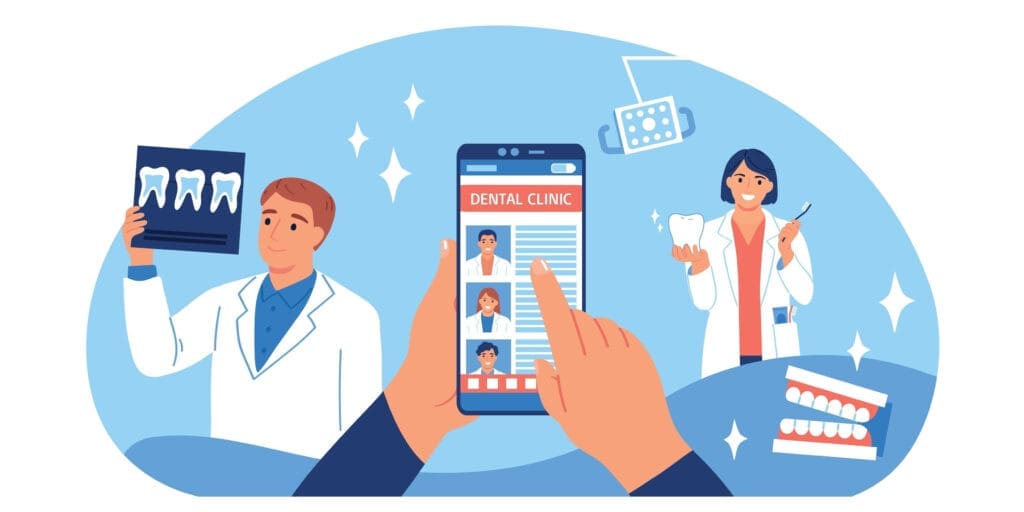Last updated on September 24th, 2020 at 11:15 am
 I hope you’ve enjoyed these posts on my office’s Scheduling Policies. In this week’s post, we’ll cover policies 9 through 13. In last week’s post, I covered points 6 through 8 (click to read), and in my first post, I covered 1 through 5 (click to read).
I hope you’ve enjoyed these posts on my office’s Scheduling Policies. In this week’s post, we’ll cover policies 9 through 13. In last week’s post, I covered points 6 through 8 (click to read), and in my first post, I covered 1 through 5 (click to read).
With that, here goes with points 9 through 13:
SCHEDULING POLICY #9: Have one assistant per chair.
At times, this one is met with a degree of resistance. We might think “that will cost me too much in payroll,” or “Why? What is that assistant going to do?” (and so on). Whatever you spend money on in a business must have some kind of return on investment. So let’s take a look as to how adding a DA would make sense financially.
First off, I’m going to assume that you don’t like waiting in line. Get the idea of waiting in line for thirty minutes every time you go to Starbucks, McDonalds or the dry cleaners. It would definitely affect how you felt about those establishments.

The purpose of this scheduling information is to help you become more organized and provide service to your patients while decreasing the amount of time they sit idly in the chair. That being said, there will always be times when the patient has to wait on the doctor to one degree or another; but you should strive to make the time the patient has to wait minimal if at all possible.
Here’s what I have personally observed: If someone is sitting with the patient talking with them, they were in a better mood when I walked into the room. I also didn’t have to apologize for making them wait because as long as someone was paying attention to them they didn’t feel like they were “waiting.” When I walked into the treatment room they were smiling as opposed to scowling. That alone was worth whatever that assistant cost me.
But let’s blend this policy in with the next, and you’ll see it becomes dynamic.
SCHEDULING POLICY #10: The doctor doesn’t do any procedure that can be delegated (i.e. taking x-rays, making temps, writing in charts, etc.).
Running behind or having not enough time for the doctor to properly diagnose, treatment plan and sell dentistry are common scheduling problems. I know that it only takes you “five minutes” to make a temporary; but it doesn’t take long to lose an hour in a day making temps, taking x-rays and writing in charts.

When I bring up delegating some of these things, a common objection I run into is that you can’t find anyone to do it properly. My viewpoint on that is that you learned so someone else can learn. All you have to do is decide to teach them. If they really don’t have the hand-eye coordination to do it then transfer them somewhere else in your organization or get someone who can learn how to do it.
The point is that once you give up everything that you aren’t required by law to do, all of a sudden you have plenty of time to do more of the stuff the law requires you to do.  You will be able to run on time and spend a few more minutes selling comprehensive care to that recall or emergency patient. So don’t complain about running behind or being tired when you aren’t delegating properly. And as I stated in the policy prior to this one, the patient will still receive quality care in less time.
These next two policies are critical to good customer relations and quality service.
(Related: 5 Ways to Reduce Hygiene Cancellations and No-Shows)
SCHEDULING POLICY #11: Record the exact procedure being done in the appointment book.
Two crowns on 8 & 9 may be a different tray set up than two crowns on 18 & 19; therefore, it must be clearly noted in the appointment book as to what is being done so as not to waste time for the assistants setting up the room. I’ve seen appointment books with just the patient’s name and time blocked off with no clue of what was to be done. This wastes a lot of time in the back and can easily lead to a lot of frustration.
The rule here is to have all the necessary information available at a glance so staff aren’t having to “go to another screen” or “dig through a chart.”
SCHEDULING POLICY #12: No Secondary or Tertiary procedures are scheduled into the Primary block until 70% of the daily goal is scheduled or after 12:00 PM of the previous day.
You reserve time in the schedule for Primary procedures so as to quickly see and help patients that need those types of procedures. You can’t panic, then, if on Monday morning you still have time available in your Tuesday Primary block. Take a look at the Hygiene patients that are coming in for the morning or work a new patient or an emergency into the schedule. If you really intend to fill the Primary block with primary procedures, you usually can.
That being said, if it is later than noon and there is still time available in the Primary block for the next day, then fill it up with something. My suggestion is to fill it with a patient that might possibly need a Primary procedure, (i.e. an emergency or a new patient).
SCHEDULING POLICY #13: No primary procedures are to be appointed to be done after lunch.
This was very important for me. The last thing I want to be doing after a long day is a crown prep or root canal. This may or may not be a problem for you, so adjust this policy to your liking.
My personal policy was that if the Appointment Secretary wanted to put a Primary procedure in after lunch she had to clear it with me. I would usually approve it; but not until after an extensive series of questions as to the patient’s number of vacation days, work schedule, etc. My staff knew that I didn’t like to do this so they usually had exhausted all options with the patient before making that request. I just didn’t like to do those procedures at the end of the day.
Before I end off this post, I wanted to mention we have the whole schedule system and training for the team available on DDS Success! If you haven’t already checked it out, I highly suggest heading over to www.ddssuccess.com to learn more about all the different courses we have available. You can schedule a free demo here.
This series will continues with “SCHEDULING POLICY #14: The hygienist is interruptible. When the doctor comes into the operatory, he or she drops what they are doing so the doctor can do the exam.” – For Part 4, click here!



One Response to “Dr. Winteregg’s Dental Office Scheduling Policies | Part 3”